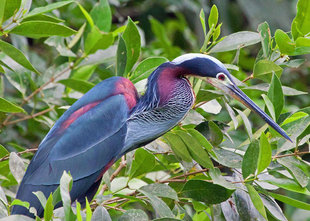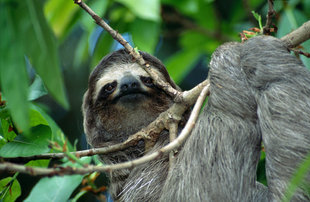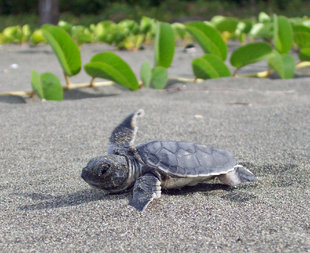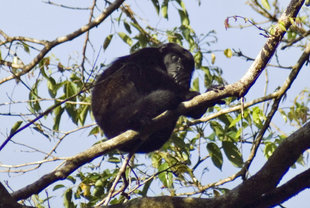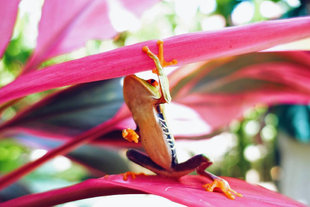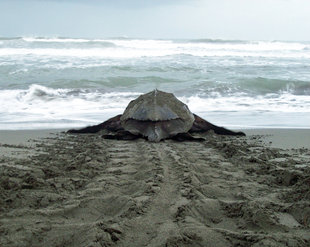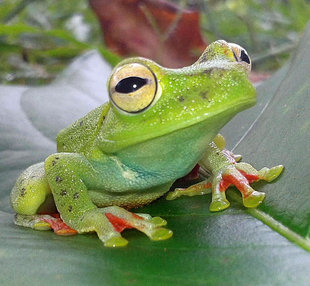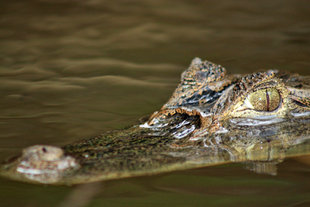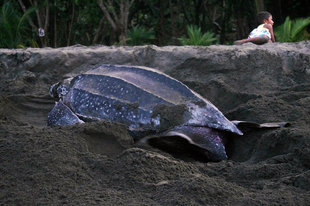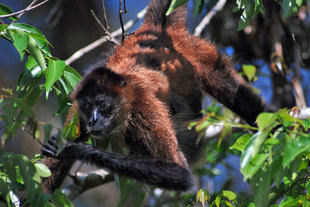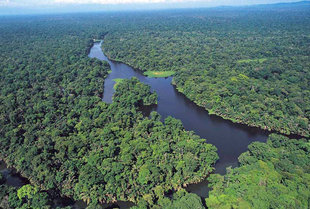Tortuguero National Park is one of Costa Rica’s most famous national parks due to the turles which nest here and its diverse range of habitats including swamps, Caribbean lowland rainforests and beaches. Tortuguero translates as ‘turtle catcher’ due to the large annual influx of green turtles - the largest in the western hemisphere. It is also an important nesting ground for the critically endangered leatherback turtle (Dermochelys coriacea) and to a lesser extent the loggerhead and hawksbill turtles.
The creation of the Limon to Nicaraguan border canal in the 1930’s enables visitors to penetrate deep into the park without the noise and disturbance of petrol or diesel engines. Wildlife can be viewed by the pull of a paddle, canoeing or the flick of a switch using quiet electric motorboats. Sights can include a troupe of noisy howler monkeys and white faced capuchins. If you are really lucky you might see the bobbing head of the vulnerable manatee (Trichechus inunguis) seen mostly in the quieter back waters.
Turtle Conservation
The relationship between humans and sea turtles in Costa Rica started several hundred years ago with indigenous tribal groups. The tribal group called the Zambo-Misquito utilised the turtles in a sustainable manner until the appearance of European settlers. What quickly followed was large-scale exportation of turtle products. The turtle trade reached its peak in 1912, with the highest recorded payload of turtles being 18 tons contained in the hold of the trading ship Vanguard.
The trade in whole turtles slowly declined only to be replaced by the trade in eggs and calipee – a cartilage like substance found in the lower shell used in soup. By 1959 the situation had reached crisis point, so Dr Archie Carr set up the Brotherhood of the Green Turtle in conjunction with the Caribbean Conservation Corporation (CCC). They set about researching the problem which resulted in the creation of protective laws and eventually the formation of the Tortuguero National Park in 1970.
The best time to see nesting turtles at the park is as follows:
Green Turtles: July -October
Leatherbacks: Mid March- early June
The scale of these turtles is truly something to marvel at. The largest recorded leatherback turtle was the weight of a Mini car at 916kgs. Whilst they are strong swimmers at sea, it is almost painful to witness the effort needed to drag themselves up onto the shore and dig a 1 metre hole in which to lay their eggs.
At the opposite end of the life cycle of turtles, hatchlings turtles can be seen emerging from nests up to about 75 days after the last pregnant female has laid her eggs. Whilst the hatchlings are significantly more nimble, they are vulnerable to attack from seabirds, sharks and where allowed onto beaches, domestic dogs.
Whilst overall the best time to see turtles is between mid March and November, the rainforests of Tortuguero usually enjoy some of its driest weather outside of this period making it an excellent place to visit for its rainforest wildlife and birdlife.
Tortuguero birdlife
There are 309 known species of bird to live in Tortuguero. Permanent birds include kingfishers, herons and rails as well as migratory birds passing from north America to south America during the spring and autumn. If you are lucky you may even see the endangered Great Green Macaw (Ara ambiguus) which replaces the Scarlet Macaw which is found on the Pacific coast.

